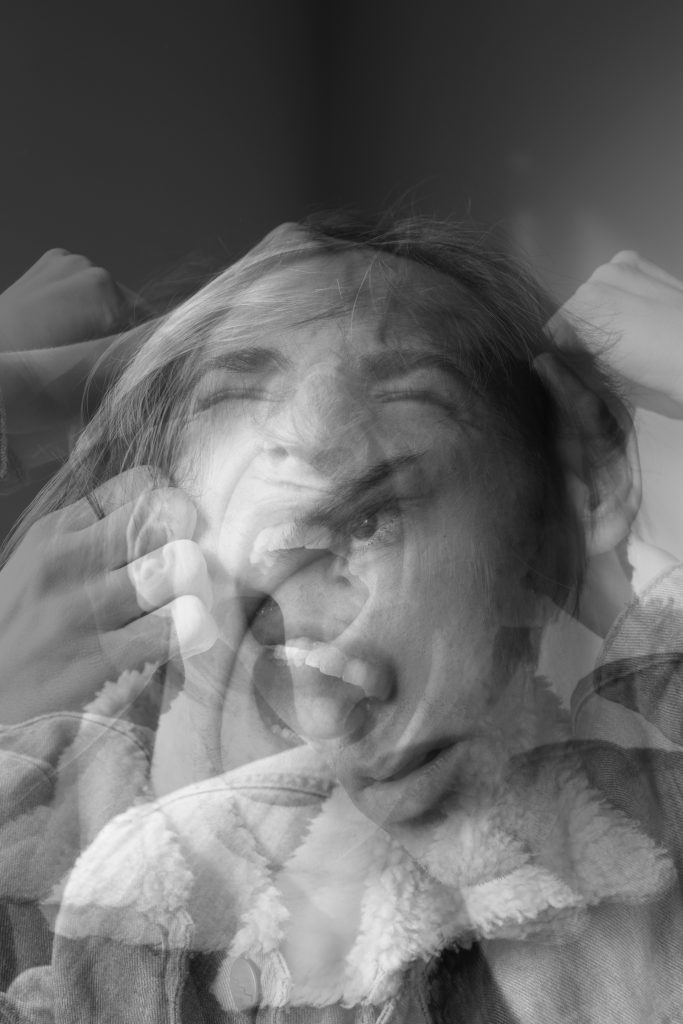
HV: When I was doing my yoga acharya course a few years back, a very dear friend of mine approached me for help because she was going through a depression. Since I was not a qualified counselor, I referred her to a counselor and at the same time took her to my friend and yoga therapist for some classes. I used to accompany my friend to these classes and saw her progress. Within 2-3 months I saw a remarkable change in her, thanks to counseling and a well-designed yoga practice consisting of Asana, prANAyAma and mantra chanting. She was almost back to a state of being functional.
To me this process was very interesting right from how much of the illnesses we manifest and how we can work steadily with the mind to alter the effects of disease. So, I wanted to understand how does yoga look at such illnesses?
Raghu: You may have to look at it slightly differently because saying that all illnesses have a psychosomatic origin brings in a western perspective on top of an Indian way of looking at things. In Sankhya it is the pradhAna that is going through transformations of buddhi, ahankara, manas, and the indriyas, as the on-going interactions with the outside. It is not like the psyche and the soma are two different things- anything that happens to a person will have its physical and psychological correlates, if we are using these terms. In Ayurveda, prajnyAparAdham i.e., mental imbalance is one of the causes for illness.
HV: These illnesses are one of the pariNAma or changes happening to the body and mind. Do we look at it from this point of view or something else?
Raghu: Anything that is causing duHkha, or taking away one’s swatantram, (independence) and taking away some of one’s abilities to deal with the world in a meaningful way is illness. The sUtra vyAdhi-styAna-samshaya-pramAda-Alasya-avirati-bhrAnti-darshana- alabdhabhUmikatva-anavasthitatvAni citta-vikShepAH te-antarAyAH elaborates on this connection between the gross and subtle manifestation of illness. The sUtra says that unless you create a firm bhUmi for yourself, a firm foundation from which to act, any of the following symptoms of illness could manifest: vyAdhi is the gross form of illness, bodily suffering; styAna which is dullness; samshaya which is unsteadiness and doubt; pramAda inattentiveness; Alasya laziness; avirati restlessness; bhrAntidarshana fantasy and delusion; alabdhabhUmikatva inability to find a meaningful ground; anavasthitatvam inability to be rooted in one’s truth; all these are the ways in which Yoga sees illness. In fact, it says that any physical or mental state that prevents one from following one’s path to liberation is lack of health. The next sUtra elaborates about the manifestation of these symptoms- duHkha daurmanasya angamEjayatva shvAsa prashvAsA vikShEpa saha bhuvaH. duHkha – suffering; daurmanasya- depression and mental weakness; angamejayatva- unsteady or weak body; shvAsa prashvAsA- uncontrolled breath; vikShepa- mind that is not capable of sustained attention saha bhuvaH- co-exist. These two sUtras describe the subtler and the more gross symptoms of a person who is not really healthy. As a Yoga Therapist you need to understand this at a practical level in the case you described.
Now the first step in designing the therapy is not only to understand the symptoms of the illness, but also to look at what is actually possible for the person to do? Shri Desikachar told me this when I started teaching. Once a mentally challenged child came to me for therapy. As soon as he came to the Mandiram (KYM) he would climb up the windows, keep running here and there and was very restless. The first step is to connect with the student without jumping to the solutions etc. In this case I had to make the child feel comfortable with me, else the next steps would be of no use. I taught the child some simple arm movements with sounds to make it interesting. I made him imitate me and repeat some simple sounds. That’s all I did for a few classes. As he started responding, I added other elements like numerical counting etc. One needs to keep all the techniques behind oneself to see what the student is capable of in the current moment. In a few weeks that child was able to do utkatAsana, uttanAsana etc., which was not possible for him earlier. This made him feel confident of his own body. The big change was that he was not soiling himself any more. He was able to use the toilet and squat. This made him acceptable to other kids. This in turn gave him a sense of accomplishment and being valued. His caretaker took over the supervision of the Yoga lessons, by doing the course with him. Slowly, the child became more amenable and started applying himself to simple tasks and so on. So, with kids you need to do something and then they will imitate you. Through this experience at KYM we developed a whole new way of teaching children with special needs etc.
HV: Don’t you think a person with any mental illness will have a lot of tamas?
Raghu: Yes, and that is why making a connect with the person to make him/her do something is very important. daurmanasyam, means that one does not feel like doing anything to transform his/her own situation. In the Bhagawad Gita, the 1st chapter of Krishna-Arjuna samvAdam is where Krishna tells Arjuna to get up and do something without giving in.
HV: In my friend’s case, she was progressing well as long as she was in touch with the teachers but as soon as she went back to work despite all warnings her condition regressed.
Raghu: You need to understand that when a person is suffering from a mental illness, it is not his/her doing only, there is something in the environment that is making these symptoms come up also.- there is an Alambana (context that influences behavior) in that persons’ social structure. For example, a person may have an antagonistic relationship with her/his parents and even though I as a Yoga teacher could have a trustworthy relationship with the person, the safe environment needed for steady progress is not there. Unless the environment supports the person to make changes, they cannot make any progress. Often mental illness is the result of an unhealthy interface between the person and the environment, where a negative cycle has been established. That is why creating the context is important and it should start in the class. This is very important for primary caregivers to realize and be part of the therapy.
HV: I know so many of my friends who are in premier organizations away from homes and go through very tough times. So, is the above true for such cases too?
Raghu: You need to look at this at another level, where the current context of being in a highly competitive environment does not accept people easily. Thus, people are striving to be someone other than their own selves. In such cases, creating a positive context for people is helpful, like a group yoga class.
HV: Yes, people are looking for a community, which will accept and support them.
SR: A society that does not enable people to invest in their own well being is a sick society.
Raghu: That’s true but as a Yoga teacher you have to start from where you can make a difference. Even if people are willing to imitate you and blindly follow your instructions, it is a great start. The right combination of food, Asana, context creation and other changes would help a great deal.
HV: Now my friend, who had regressed, was diagnosed as being bi-polar and became very antagonistic towards any yoga practice, in fact she only wanted a physical practice and nothing to do with the ‘mind’. This shift happened because she went back to work despite the counselors warning her not to do so. She insisted that she was better and that she had to get back to work for the sake of her career etc.
Raghu: These illnesses can be a result of external pressures and also one’s inability to handle them. Ayurveda also talks about these things in terms of shamanam, shodhanam and Arogyam. The person mentioned above may have had a certain degree of shamanam and shodhanam but Arogyam, which is to understand the root cause of the disease to prevent its recurrence, probably did not happen.
RA: I have talked to many people and they tell me how their family members refuse to acknowledge their problems and also would not come for therapy. How do you deal with these cases? Is there a framework?
Raghu: The moment you start labeling people you cannot make any headway because Yoga is a relationship between the teacher and student, thus there is a volitional aspect in the whole practice. The western framework is useful for diagnosis I will not dismiss it completely. In cases like the above, it is always good to work with someone who is a trained counselor because we do not have deep knowledge of clinical conditions in yoga yet. The labeling of the person is no indication of his/her inner propensity to practice. The information should not constrain you but your relationship with the student should help him/her progress.
AR: I have a few people diagnosed as schizophrenic coming to me for yoga therapy. They do fall off the wagon sometimes but come back when they feel better. It has not been possible to create a stable bhUmi but each time they start their practice the quality of their lives improves.
Raghu: Of course, it will.
AR: The family members take a keen interest in their practice and are always in touch with me to understand their progress.
Raghu: That’s wonderful. You cannot be with them 24×7 and each of these cases will have a caregiver. Now for the mentally challenged kid, he improved because the caregivers were also taught yoga and while they did the practice in the mornings the child also followed. This created a context for improvement and sustaining the change.
RA: The hardest part with people I am teaching is that parents or family members think they do not need yoga and only the child needs therapy. Since they are not involved, they will also not pay attention to the food requirements of the patient, nor make any changes in their interface with the patient.
Raghu: Having an Ayurvedic doctor on the team also helps because food is an important part of the practice. A team of specialists should look at the student holistically.
KA: My mother was schizophrenic and eventually succumbed to it. At that time, we never got her into a yoga practice and she was only on medication. But whenever she used to come and live with us for a month, I used to give her some household responsibilities and that would make a huge difference in her condition. But the moment she went back home to my father, it all reversed because he treated her as someone who was sick and needed a lot of special care.
Now as yoga teachers we are able to understand the person and the context, so we can suggest some remedies. But, unless the context is sensitive to the whole problem, ‘merely taking care’ of the patients would not be sufficient.
RA: I have seen this with a lot of addiction cases as well.
Raghu: Look, there are two very important points that you make-:
- In yoga we do not see the person’s mental, physical and emotional state as separate entities.
- We also do not look at the viShesha (the gross) level of the person and treat only that. The aviShesha (the subtle) level is the context the person lives in; this also needs to be conducive for any change to take place.
KA: It does make a lot of sense. In fact, I have a student who is very bright and sensitive but the family context is not that great, because of other ailments within the family. He comes for yoga a few times a week and I taught him how to set an intention for harmony at home. But last week he told me how he feels something is wrong with him and that he may have a borderline personality disorder. Thus, he wants to start medication. This broke my heart and it is so easy for the family to start him off on medication as well. But I have told him to see a counselor and also work with me 1-1 to try and get over this.
Raghu: Yes, you need to work with the doctors, stage by stage to pull the person out of it. The other thing you need to keep in mind is to figure out how and when to bring in the breath and sound in the practice because people are very sensitive to sound and breath. Sometimes breath and sound help calm and sometimes can even excite a person.
HV: Yes, like my friend was sensitive and responsive to sounds. We started with Durga suktam and she connected to that.
Raghu: Durga suktam is very powerful and must have reduced her tamas.
SR: You told us earlier in one of our workshops that by the age of 5 all the samskAras of the person have set in, so after that can these illnesses come from such deep-rooted vAsanas?
Raghu: Well, most of the samskAras are set in by 5 and after that you just end up cleaning it or working with what you have. Illnesses can take place at various levels like at the sensory level or the cognitive level. There may be many blocks at the buddhi, ahamkara level too. When we are young and our systems are not nurtured properly, we start off with a disadvantage. A lot of mental illnesses stem from disturbed sensory systems like hypersensitivity to sound for instance. A person like this has very open boundaries, and their hearing senses are acute so they will hear sounds of a higher range or they will associate colors with sound. These sensitive systems placed in an over-powering environment can lead to illnesses.
SR: So, what do I need to do to prepare myself to understand such cases?
Raghu: This is where the idea of vItarAgaviShayam becomes very important i.e. I need to resonate with the person where he/she is, whether it is schizophrenia or paranoia. I have to remain in shAntam without getting disturbed by the state of the other person. Then a ground for a relationship can emerge. Sri Krishnamacharya said that when I teach a student, I am transferring my power or energy to the student, so you need to pay attention to yourself also. The techniques are fairly obvious like Asana, prANAyAma, chanting, food etc. If the student is more in control of his/ her mind, contemplative and self-reflective dialogues are very essential to enable them to develop a new way of seeing themselves and the world. I use the initial ground I create with the person to come up with a course plan for him/her to be self-sufficient and independent. Now the self-reflective work that we do cannot be applied to them till they become sufficiently self-reliant, so we need to help them differently. Sometimes, just story telling helps.
HV: In Kerala there was a Swamiji, who was an ayurvedic doctor and whenever family members used to bring in patients, he used to say this upfront to them before treating “as family members, it is also your responsibility to care for them and change certain aspects. Else the patient would not be cured. Even speaking lies could hurt the patient.”
RI: There are many days when I feel a lot of tamas, which leads to demotivation and surely affects my practice. As a yoga student and teacher how do I work on these issues?
Raghu: As I said before, you need to be a vItarAgaviShayam and work with your own inner processes to ensure your enthusiasm and genuineness to help the other person. In your own practice, if you are feeling tamasic, start from the outer symptoms and start examining your own context, look at the food you are eating, the living context and relationship with significant others and so on. Do practices that start with a slow easing into the flow and then add more rajasic Asana and prANAyAma.
You have to look at the relationship between yourself and the student and ask yourself searching questions like “How can I touch this person in a way that he/she feels attracted to the practice.” This bond you create will guide you to motivate the person to practice.
Lastly, as a reminder I would say keep the techniques aside and keep the person in front. The person will sense if you are only looking at the technique and not relating to him/her as a human being. For a child, play is an important part and so, you will have to motivate the child through playfulness.
RI: I understand, but there are days when I am in the context of deep illness and it becomes very difficult to step out of it.
Raghu: If you make it a single person’s burden then you make it very difficult for yourself. Is it possible to discuss these issues with your caregiver/ significant other saying, “there are days when it is very good and some days are tough, so, I need help from you.” These are all ways to help set the context. And this can only be done if the relationship between the person and the caregiver is genuine and stable.


 Anoop is a student of Yoga, an entrepreneur, a coach and a father of two young boys. He has led successful leadership stints in both the corporate and non-for-profit sectors. On encountering the country’s water/farmer crises at close quarters, he decided to pause and examine the impact various ‘isms’ – capitalism, colonialism, etc., were having on us as individuals, families, the society and the environment at large. This quest led him to formally engage with traditional Indic knowledge systems while also learning from the latest advances in science – about our physical and mental wellbeing, importance of body and mind work in healing trauma and the urgent need for a conscious rebuilding of family / work / social structures if we have to thrive individually and collectively. Insights, frameworks and processes gleaned from these on-going studies, an anchorage in his own personal practice and his wide-ranging experiences is what Anoop brings to facilitation/coaching spaces in Ritambhara and his various professional engagements.
Anoop is a student of Yoga, an entrepreneur, a coach and a father of two young boys. He has led successful leadership stints in both the corporate and non-for-profit sectors. On encountering the country’s water/farmer crises at close quarters, he decided to pause and examine the impact various ‘isms’ – capitalism, colonialism, etc., were having on us as individuals, families, the society and the environment at large. This quest led him to formally engage with traditional Indic knowledge systems while also learning from the latest advances in science – about our physical and mental wellbeing, importance of body and mind work in healing trauma and the urgent need for a conscious rebuilding of family / work / social structures if we have to thrive individually and collectively. Insights, frameworks and processes gleaned from these on-going studies, an anchorage in his own personal practice and his wide-ranging experiences is what Anoop brings to facilitation/coaching spaces in Ritambhara and his various professional engagements.
 Priya is a Yoga therapist in the Krishnamacharya tradition. She adapts Reiki & energy work, Vedic chanting, life coaching & Ayurvedic practices in her healing spaces. She is committed to nurturing collectives that have the praxis of Yoga at their heart.
Priya is a Yoga therapist in the Krishnamacharya tradition. She adapts Reiki & energy work, Vedic chanting, life coaching & Ayurvedic practices in her healing spaces. She is committed to nurturing collectives that have the praxis of Yoga at their heart. Anisha has been on an exploration to understand herself through yoga for the last 15years which led her to teaching yoga, yoga therapy and inner work through yoga.
Anisha has been on an exploration to understand herself through yoga for the last 15years which led her to teaching yoga, yoga therapy and inner work through yoga. Apoorva chanced upon Yoga in her early 20s. A spark was lit within and there was no turning back. Her exploration led her to the Krishnamacharya tradition more than a decade ago. Curious about human behaviour and what drives it, she was thrilled when her search ended (and also began) when she first came upon the Yoga Sutra, which illuminated a path towards answering many questions that had been held for a long time.
Apoorva chanced upon Yoga in her early 20s. A spark was lit within and there was no turning back. Her exploration led her to the Krishnamacharya tradition more than a decade ago. Curious about human behaviour and what drives it, she was thrilled when her search ended (and also began) when she first came upon the Yoga Sutra, which illuminated a path towards answering many questions that had been held for a long time. Anita is a yoga teacher and therapist in the tradition of Sri.T.Krishnamacarya and Sri T.K.V. Desikachar, a Reiki practitioner and a Life Coach. She is also the founder of Vishoka, a center for learning Indic and energy-based frameworks for living and healing. Her deep concern for human suffering and the problems of unsustainable living kept her on the path of seeking an integrated approach to looking at life, living, learning and healing.
Anita is a yoga teacher and therapist in the tradition of Sri.T.Krishnamacarya and Sri T.K.V. Desikachar, a Reiki practitioner and a Life Coach. She is also the founder of Vishoka, a center for learning Indic and energy-based frameworks for living and healing. Her deep concern for human suffering and the problems of unsustainable living kept her on the path of seeking an integrated approach to looking at life, living, learning and healing. Ankit is a seeker in the wisdom traditions of India. The core of his work includes creating dialogic spaces where people can look within and see the connection between their inner and outer lives. Inspired by the likes of Gandhi, Aurobindo, Vivekananda and Guru Gobind his experiments in service took him back to his roots in Punjab where he is creating a community-led model of higher education which is open, inclusive and accessible for all. Ritambhara for him is a space for engaging in a community which is committed to a DHramic life. He anchors his work of learning and leadership in the Antaranga Yoga Sadhana and the humanistic wisdom of Mahabharata.
Ankit is a seeker in the wisdom traditions of India. The core of his work includes creating dialogic spaces where people can look within and see the connection between their inner and outer lives. Inspired by the likes of Gandhi, Aurobindo, Vivekananda and Guru Gobind his experiments in service took him back to his roots in Punjab where he is creating a community-led model of higher education which is open, inclusive and accessible for all. Ritambhara for him is a space for engaging in a community which is committed to a DHramic life. He anchors his work of learning and leadership in the Antaranga Yoga Sadhana and the humanistic wisdom of Mahabharata.
Aw, this was an incredibly good post. Spending some time and actual effort to make a very good article… but what can I say… I
put things off a lot and never manage to get anything done.
Thank you. That’s a really informative article on the framework. May I also ask for views on what’s called developmental differences e.g Autism in the context of developmental medicine nowadays. The children may actually find connecting with people as a non preferred way of engagement and find it preferable to orient to sensory experiences or patterns. “ Engaging “ such a child who is not consistently aware necessarily of your intent or of you as a “ person with intent , may be difficult for both caregivers and the therapist. Any suggestions?
Dear Kavita,
I have worked with children who are challenged. The only thing I relied on was my commitment to try and touch them in a pure place. Often I had to learn to look at my own reactions and settle them. It is only when I did that did the child settle down. These children are super sensitive to their context. lt has always been a great lesson in observing myself.
Regards,
Raghu